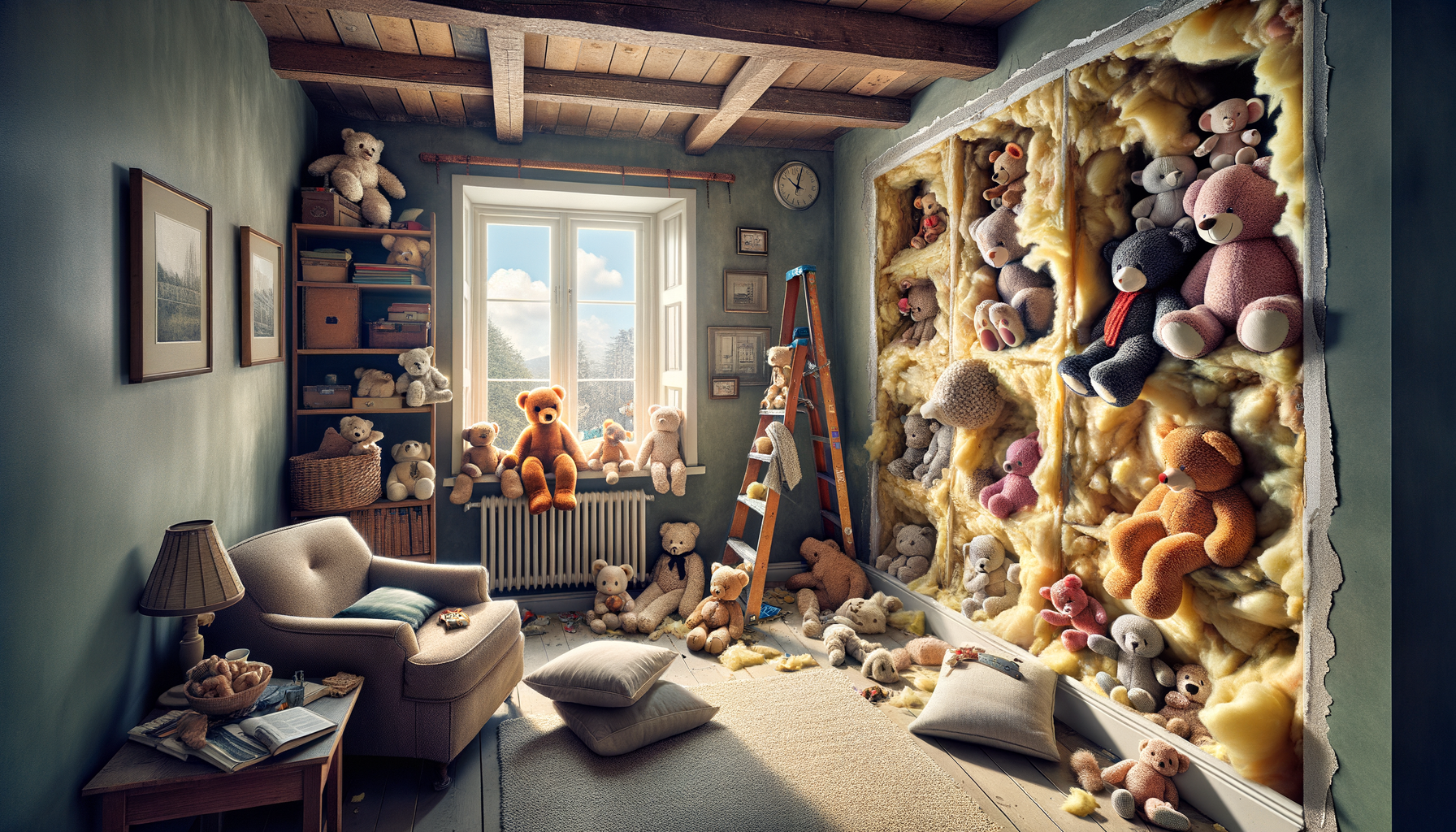Creative Insulation Solutions: When Homeowners Turn to Stuffed Animals for Energy Efficiency

Discovering imaginative yet questionable home insulation choices can be an intriguing journey into the creativity of homeowners. Recently, an unusual discovery has made rounds in the home improvement community, sparking both surprise and curiosity. During a routine renovation project, a contractor stumbled upon an intriguing selection of insulation material: an assortment of stuffed animals.
While traditional materials such as fiberglass and foam are commonly used for insulation due to their effectiveness in maintaining thermal efficiency, reducing energy costs, and improving overall home comfort, this novel approach raises several eyebrows. The eclectic mix of fuzzy toys nestled within wall cavities may indeed serve as a temporary fix, but it certainly isn’t the most efficient or advisable method for insulation.
Stuffed animals, typically cherished for their softness and sentimentality, aren’t designed to provide the essential properties required for effective home insulation. These toys lack the density and thermal resistance needed to truly insulate a home from temperature fluctuations. According to experts, proper insulation not only involves selecting the right materials but also ensuring their correct installation to achieve full energy efficiency.
Given that homeowners are continually seeking ways to reduce utility bills and enhance environmental sustainability, the discovery might have been a cost-cutting measure or an imaginative, albeit unconventional, DIY project. However, the potential problems far outweigh any short-term savings. Stuffed animals are susceptible to moisture retention, which can lead to mold growth and structural damage over time, not to mention their potential allure to pests seeking cozy nesting spaces.
Correct insulation plays a significant role in maintaining a home’s integrity, from floor to attic. It provides a barrier against external temperatures, controls humidity levels, and helps sustain a comfortable living environment. Traditional materials, like fiberglass, cellulose, and spray foam, are recognized for their capacity to create effective thermal barriers, ensuring homes remain warm during winter and cool over the summer months.
Moreover, the long-term implications of using an inappropriate material for insulation can be costly. Homeowners might face increased energy bills, degradation of building materials, and even potential health risks associated with mold infestations.
In conclusion, while the use of stuffed animals as insulation might add an element of surprise and intrigue, it’s always advisable to stick with proven, safe, and effective materials when aiming to insulate your home. Allowing certified professionals to assess and install the appropriate insulation ensures your home stays comfortable, efficient, and up to standard, providing peace of mind and safeguarding your investment in the long haul. As fascinating as unconventional insulation might be, the pros of sticking to traditional methods far outweigh any creative allure.
